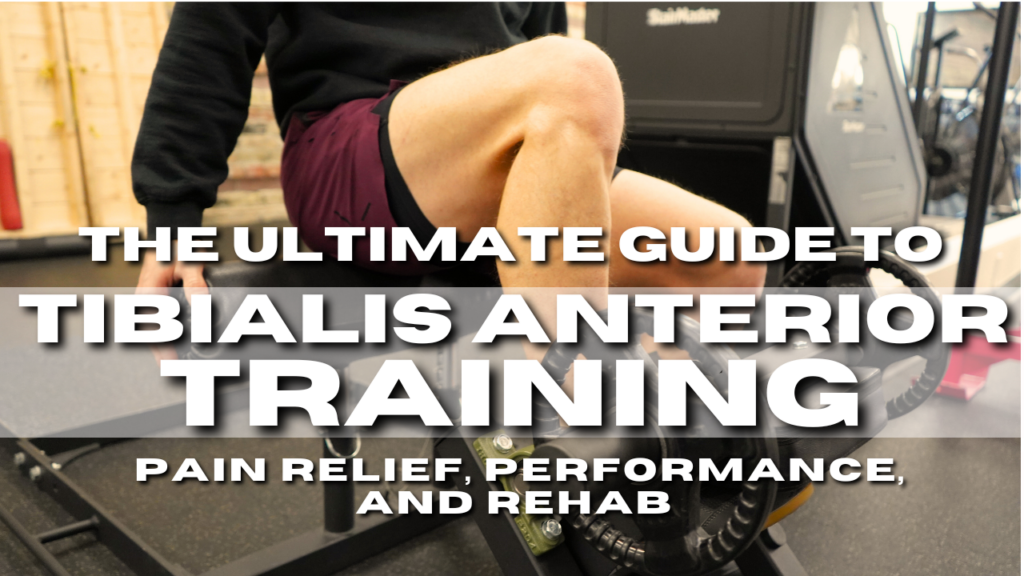
The Ultimate Guide to Tibialis Anterior Training: Pain Relief, Performance, and Rehab
The tibialis anterior is a crucial muscle located in the anterior compartment of the lower leg, playing a significant role in foot movement and overall lower limb functionality. Understanding its anatomy, functions, common issues, and training methods can aid in maintaining optimal performance and preventing injuries.
Anatomy and Function of the Tibialis Anterior
Originating from the lateral condyle and the upper two-thirds of the lateral surface of the tibia, the tibialis anterior inserts into the medial cuneiform bone and the base of the first metatarsal. It is primarily responsible for dorsiflexion and inversion of the foot at the ankle joint, essential movements for activities such as walking, running, and balancing. Additionally, it supports the medial longitudinal arch of the foot, contributing to proper foot mechanics during movement.
Causes of Tibialis Anterior Pain
Pain in the tibialis anterior region can stem from various factors, often related to overuse or strain. Common causes include:
- Anterior Tibial Stress Syndrome (Shin Splints): Repetitive stress, especially from activities like running or jumping, can lead to microtrauma in the tibialis anterior, causing inflammation and pain along the shin.
- Tibialis Anterior Tendonitis: Overuse can result in inflammation of the tibialis anterior tendon, leading to pain and swelling in the front of the ankle.
- Muscle Strain: Excessive physical activity or sudden increases in exercise intensity can cause overstretching or tearing of the muscle fibers, resulting in acute pain and tenderness.
Training the Tibialis Anterior for Pain Reduction and Rehabilitation
Strengthening the tibialis anterior is beneficial for both preventing and rehabilitating injuries. Targeted exercises can enhance muscle endurance, reduce pain, and improve functional mobility. Effective exercises include:
- Resistance Band Dorsiflexion: Sitting with legs extended, loop a resistance band around the foot and secure the other end. Pull the toes toward the shin against the band’s resistance, hold briefly, and release. This exercise targets the dorsiflexion movement, strengthening the tibialis anterior.n
- Toe Raises: While seated or standing, repeatedly lift the toes upward while keeping the heels on the ground. This simple movement engages the tibialis anterior and can be performed multiple times daily.
- Heel Walks: Walking on heels with toes elevated for short distances activates and strengthens the tibialis anterior, promoting better muscle control and endurance.
Incorporating these exercises into a regular routine can alleviate existing pain and prevent future occurrences by addressing muscle imbalances and enhancing lower leg strength.
Enhancing Athletic Performance Through Tibialis Anterior Training
For athletes, a robust tibialis anterior contributes to improved performance, particularly in sports requiring rapid foot movements and stability. Benefits of targeted training include:
- Injury Prevention: Strengthening this muscle reduces the risk of shin splints and stress fractures by enhancing the muscle’s ability to handle repetitive stress.
- Improved Agility and Speed: A strong tibialis anterior facilitates quicker dorsiflexion, aiding in faster changes in direction and sprinting efficiency.
- Enhanced Proprioception: Training this muscle improves the body’s ability to sense its position in space, leading to better balance and coordination.
Methods for Training the Tibialis Anterior
To effectively train the tibialis anterior, consider the following approaches:
- Progressive Resistance Exercises: Utilizing resistance bands or weights to progressively challenge the muscle ensures continuous strength development.
- Incorporating Functional Movements: Exercises that mimic sport-specific activities can enhance the muscle’s performance in relevant contexts.
- Ensuring Adequate Recovery: Allowing sufficient rest between training sessions prevents overuse injuries and promotes muscle repair and growth.
By understanding the role of the tibialis anterior and implementing targeted training strategies, individuals can enhance lower limb function, reduce pain, and improve athletic performance.